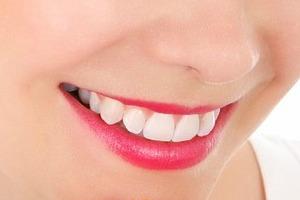Tooth Whitening Options

People have tried to make their teeth whiter in a variety of ways over the centuries. Ancient Romans used urine to make teeth whiter, while 30 years ago a toothpaste was sold that tinted gums and lips red in order to make teeth appear whiter in comparison. Today there are several options for whitening.
There are whitening toothpaste and mouthwashes that can be purchased at a grocery store. There is over the counter bleaching by using gel strips or solutions. And then there are professional/in-office treatments.
The professional bleaching agents used in your dental office are stronger than those you can purchase over the counter. This means that your teeth can lighten more shades in a shorter amount of time. Additionally, your gum tissues are protected either through the use of a rubber dam or a gel that is applied to the gums in order to keep the active ingredients from the irritating tender gum tissue.
The over the counter products have a differing concentration of active ingredients. Because the gums are not protected, people should apply the gels/strips carefully to try and avoid irritation and keep the gel on the tooth enamel.
The rinses are relatively low concentration but can still irritate mucosa like the cheeks. Results from over the counter products can vary widely, with some people seeing good improvement and others seeing very little results or no results at all.
Whitening toothpaste has a polishing or chemical agent that removes surface stains. While this polishing removes stains, it does not alter the basic color of the teeth. It simply removes additional staining from coffee, tea, wine, or smoking. Whitening toothpaste is safe for daily use if you follow the directions, but excessive use of this type of toothpaste can irritate and cause problems with enamel over time.
Chronic whitening or failing to follow instructions can lead to gum irritation and increased tooth sensitivity. Desensitizing toothpaste can help, and most of the time the irritation or sensitivity stops when the person stops using the bleaching products.
Some people have tried to use baking soda in order to whiten teeth. While this is an inexpensive route, there can be serious drawbacks if it is not used carefully. The abrasive nature of the baking soda can weaken enamel, leading to cavities. The baking soda also does not have any anti-bacterial properties, so toothpaste is still needed to prevent additional tooth decay. Many suggestions to add lemon or other citrus fruits to the baking soda can irritate gums and again, can increase the likelihood of weakened enamel.
If you are interested in whitening your teeth, it is best to check with your dental team before attempting to bleach your teeth to find out which products would be best for you. Bleaching agents do not work well on fillings, crowns, or very dark stains. Let us help you find a product that will work well for you!
Sources: http://www.newhealthguide.org/Brushing-Teeth-With-Baking-Soda.html
http://www.mayoclinic.org/healthy-living/adult-health/expert-answers/whi…
